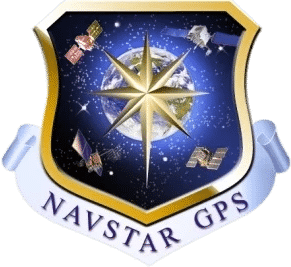What is GPS and How Does GPS Tracking Work?
In the world of technology one is able to know the location of the person with the help of GPS. One will be able to find the GPS system everywhere such as our vehicle, Smartphone, or help smartwatch. Apart from the location one is able to know where the person travels, the velocity and the time. Do you have a question about what GPS is or How GPS works? Here this article will help you to answer your questions.
Today, with the help of GPS, you can book an ola or uber cab for taxi services, food gets delivered to your destination with GPS data, online shopping, vehicle tracking all are possible with GPS!
Have you ever thought the technology behind the GPS and how GPS as a system function to deliver accurate information?
In this article, we explain the technology behind GPS and how this technology impacts various industries.
What is GPS?
The GPS stands for the Global Positioning System. It is an navigation system that uses the satellites, receivers and the algorithms in order to synchronize the velocity, location, and time data for the sea, air and the land travel.
How did it begin?
What started out as a military operation by United States Army to aid the global intelligence, in efforts to combat the Cold War, GPS or Global Positioning System has come a long way from its inception.
The very first GPS was developed in the mid-1960s by the U.S Navy and was used to navigate oceans more preciously.
As the world moves forward with a huge amount of research and development in the field of technology, GPS now is freely available to anyone with a GPS receiver in place, and smartphone applications are one its biggest beneficiaries.
What is the evolution of GPS?
The United States Navy was the first one to use a satellite navigation system and was tested successfully during the year 1960. With the help of five satellite constellations, it provides a navigational fix once per hour approximately. During the year 1967, the United States Navy developed the timation satellite that proved the ability for placing the accurate clocks in the space technology that GPS System relies upon. Later in the 1970’s the Omega Navigation System became the first world -wide radio navigation system based on the signal phase comparison. On 17th of November 2006 there was a recent launch of the GPS satellites.
Historical background of GPS
The Global Positioning System (GPS), originally NAVSTAR GPS, is a satellite-based radio navigation system which was owned by the United States government and operated by the United States Space Force.

It is one of the global navigation satellite systems that provides geolocation and time information to a GPS receiver anywhere in or near the Earth. It requires an unobstructed line of sight to four or more of the GPS satellites. Obstacles such as mountains and buildings block the relatively weak GPS signals.
IRNSS - NaVIC
The IRNSS NavIC is the first Indian Navigation Satellite System which has been designed for providing an accurate position of information to the indian users and for the region extending upto 1500 KM through its boundary which is the primary service.
The RNSS will help to provide two types of services, 1. SPS (Standard Positioning Service) which will be provided for all the users and the 2nd one os the restricted Service (RS), where the service is encrypted and has been provided a position accuracy better than the primary Service Area 20 m.
What are applications of IRNSS?
Some of the IRNSS applications are terrestrial, Areal and Marine Navigation, Disaster Management, vehicle tracking and fleet management, integration with mobile phones, precise timing, Mapping and geodetic data capture, Terrestrial Navigation aid for the hikers and the travellers, apart from these it also has a visual and the voice navigation for the drivers.
Working Principle behind the GPS Technology
Global Positioning System consists of three segments:
- the space segment,
- the control segment, and
- the user segment.
The U.S. Air Force develops, maintains, and operates the space and control segments.
The GPS satellites give out special signals which are processed by a receiver. The space segment consists of a constellation of satellites transmitting radio signals to the user.
For this purpose, 24 operational GPS satellites are maintained, 95% of the time. To ensure these 31 satellites are being maintained as a backup to cover up any breakdowns.
These satellites transmit radio signals which are captured by the receivers. GPS satellites fly in the medium Earth orbit at an altitude of approximately 20,200 km. Each of these satellites orbits the Earth twice a day.
The control segment consists of a global network of ground facilities. These facilities help in tracking the GPS satellite, monitor their transmission and send commands.
The current Operational Control Segment includes (OCS) a master control station, an alternate master control station, 11 command and control antennas, and 16 monitoring sites.
Why GPS System Important?
The GPS is the most important as that helps us to find out where we are and where we are going during the travel from one place to another. Once the GPS locates our position it starts tracing each and everything such as speed, tracks, bearings, distance of the destinations, and the speed. This GPS is one of the most important for your Fleet management. A good GPS Fleet Management System can help you to make a change in your business and will be giving you the most all kinds of benefits.
How does the GPS work?
Basically GPS needs 3 types of satellites for producing the location on the earth’s surface. The 4th type of satellite is used for validating the information from the other 3 satellites, also it moves into the third dimension and will allow to calculate the altitude of the device.
The Satellites will be revolving around the earth and help to send the signal in order to be read and interpreted by the GPS device that is situated on or near the surface of the earth. For calculating the location a GPS device must be able to read the signal through four satellites at least. Each of the satellite networks will be orbiting the earth twice a day and will be sending an unique signal, time, and the orbital parameters. The GPS device can read signals from 6 or more than 6 satellites.
When the satellite sends the signal , it will be creating a circle with a radius that is measured from the GPS device to the satellite. While adding the second satellite, it helps to create the second circle and the location will be narrowed down to one step of two points where the circles will be intersecting. Using the third satellite, one is able to determine the device’s location.
How User receives GPS data?
The user’s GPS receiver is the user segment of the GPS. In general, GPS receivers is comprised of an antenna, tuned to the frequencies transmitted by the satellites, receiver-processors, and a highly-stable clock.
In addition, they might include a display for providing location and speed information to the user. A receiver is often described by its number of channels, signifying how many satellites it can monitor simultaneously.
Originally it was limited to four or five channels, but it had typically increased over years 2007. Now, the receivers can have between 12 and 20 channels.
The GPS receiver gets a signal from each GPS satellite. The satellites transmit the exact time, the signals are sent. By subtracting the time the signal was transmitted from the time it was received, the GPS can tell how far it is from each satellite.

The receiver also knows the exact position of the satellites, at the moment it receives signals. So given the travel time of the GPS signals from three satellites and their exact position in the sky, the GPS receiver can determine your position in three dimensions.
What is the accuracy level of GPS?
GPS position is not perfect. Some errors you have some control over. As a GPS user, you have some control over the first type of error – you can wait for the satellites to move into better geometry or plan your data collection for a good time of day.
You cannot control multi-path error, but you do need to recognize when it may occur and pay close attention to the measurements that you are taking. Orbital and Satellite Clock errors as well as atmospheric delays are invisible to you, but you can avoid them by using differential correction.
There is nothing that you can do about your receiver clock errors. GPS receivers will generally report an estimate of the accuracy of the position being reported by the unit at the time.
The reference station calculates the errors in the GPS signals by comparing its known position to the position derived from the satellite signals. The stations actually calculate the differences between measured and actual ranges for each of the satellites visible from that station. This calculated difference is called the “differential correction”
How GPS is Useful?
The GPS is one of the most dominant and the trustworthy tools for various businesses and organizations in various industries. Some people who use the GPS on a regular basis are Surveyors, Boat Captains, Scientists,First respondent, Pilots, workers in mining and agriculture. People use the GPS information for preparing some accurate maps and surveys, time measurements, tracking the location and the navigation. Mostly the GPS will be working in any situation the below are the 5 uses of GPS.
Tracking
These days the tracking is mostly used by the cops to catch the criminals. In simple words the tracking will help to know where the person or the object is.
Timing
Time is the most important for all kinds of activities. The GPS time has created cost savings for every company. The GPS timing is used for synchronizing the wireless communications. It also Helps to find the estimated time of arrival.
Location
Location is known to be one of the most common applications among the GPS. There are a number of adventure lovers who use their own trackers as it has lots of advantages. The location can help you to locate where you are.
Mapping
The GPS can be used for mapping and surveying the projects. This helps the company by saving the time as well as the costs. Some projects such as Highways, crops, types of soil, power lines and rivers will be done using mappings.
Navigation
The GPS navigation will help to find the receiver’s locations by getting information from the three to four satellites. Some information includes the precise time of the transmission and the satellite position . In simple terms it Helps to reach from one place to another.
How accurate is the GPS?
GPS position is not perfect. Some errors you have some control over. As a GPS user, you have some control over the first type of error – you can wait for the satellites to move into better geometry or plan your data collection for a good time of day.
You cannot control multi-path error, but you do need to recognize when it may occur and pay close attention to the measurements that you are taking. Orbital and Satellite Clock errors as well as atmospheric delays are invisible to you, but you can avoid them by using differential correction.
There is nothing that you can do about your receiver clock errors. GPS receivers will generally report an estimate of the accuracy of the position being reported by the unit at the time.
The reference station calculates the errors in the GPS signals by comparing its known position to the position derived from the satellite signals. The stations actually calculate the differences between measured and actual ranges for each of the satellites visible from that station. This calculated difference is called the “differential correction”
Factors Affect GPS Accuracy
The accuracy of the GPS satellites will broadcast their signals in the space with some accuracy, but the receive will be based on the additional factors such as ionosphere and number of satellites available. The given below are some factors for the accurate GPS –
Effects of atmosphere
The Ionosphere and the troposphere might create an impact for the GPS by delaying the signal this is called an Atmospheric Error. As the ionis ospheric effect circulates and it is a function of frequency, the dual GPS receivers are able to calibrate this kind of effect by just measuring the differential delay.
Physical Obstruction
The distance between the receiver and the satellite can be calculated by measuring the difference in the carrier frequency phase shift that has been experienced between the receiver and the satellite. The cycle- slips will be discontinuing in the integer number of completed cycles in the data and these are caused by the interruptions or the degradations in the signals like software failures, physical obstructions, or due to low signals.
Ephemeris
The GPS satellite that transmits the information regarding the location is known as ephemeris data. This kind of data has been used by the GPS receivers for estimating the relatives to the satellites. The ephemeris data can be used for predicting the future satellite providing some tools for planning regarding when to schedule the GPS data collection.
Miscalculations of Numerical
The accuracy of the GPS tends to be more in the open areas without any tall buildings that block the signals. This kind of effect is called Urban Canyon. When there are some large buildings in some cities the satellites signal are blocked first, and this is bounced off the building that is finally read by the device. Thus, this could result in the miscalculations of the satellite distance.
How GPS Tracking works in the vehicle?
The GPS helps the vehicle tracking system. The GPS Signals emits from the device and receives through the GPS satellite network. Soon after the satellite determines the device’s position, the information will be sent through the cellular network to the cloud server that updates the location of the device on the map. Recently GPS tracking has been improved in accuracy due to the advanced technology, better cellular, and increased GPS satellites.
A GPS tracking system will be using the Global Navigation Satellite System network. This network will be incorporating a wide range of satellites which uses the microwave signals that are transmitted to the GPS devices in order to give some information on the locations, direction, time and the speed of the vehicle. Thus an GPS Tracking system can able to give both real time and an historic navigation date potentially on any kind of data.
Role of GPS Technology in Transportation Industry
GPS technology has fully transformed the transportation industry. From your smart mobile device, you can easily locate your vehicle, manage cost and plan driver’s assignment.
GPS tracking will enable you to keep track of your vehicles and also enables you to see which vehicle is in motion and towards which direction. Some systems stores data within the tracking system itself known as passive tracking and some send information to a centralized database on a regular basis known as active tracking.
Passive GPS Tracking System
A passive GPS tracking system monitors location and stores its data on journeys based on certain types of events. For instance, this kind of GPS system may log data such as where the device has traveled in the past 12 hours.
The data stored on this kind of GPS tracking system is usually stored in internal memory or on a memory card, which can then be downloaded to a computer later on when required for analysis.
Active GPS Tracking System
An active GPS tracking system is also known as a real-time system as this method automatically sends the information on the GPS system to a central tracking portal or system in real-time as it happens.
This is usually a better option for commercial purposes such as fleet tracking or monitoring of people. This is also a useful way of monitoring the behaviour of employees as they carry out their work and of internal processes and procedures for delivery fleets.
Importance of GPS in various Industries
Communications, energy, emergency, transportation and space satellite deployment all depend on GPS, and the loss of GPS signals could have unimaginable impacts on our society.
This technology has fully transformed the transportation industry, GPS technology today extends further than just a tool to help drivers to navigate from locations.
From your smart mobile device, you can easily locate your vehicle, manage cost and plan driver’s assignment. GPS tracking will enable you to keep track of your vehicles and also enables you to see which vehicle is in motion and towards which direction.
These features are ideal towards running a successful transportation or logistics business without making too many calls or going through a huge amount of reports in order to make decisions.
GPS tracking technology can work wonders for your business and the benefits are immeasurable.

